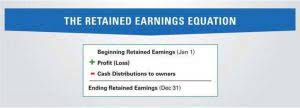Content

These guidelines separate the organization’s transactions from that of the owners, standardizes entries, and explicitly discloses periods used. They also draw on best practices for governance, disclosure, matching, and conservatism. Financial reporting communicates a company’s financial performance and results.
Government & Civil Assets Explore asset tags designed for permanent attachment to government assets. Government & Civil Assets Explore asset tags designed for permanent attachment to government assets such as traffic signs, equipment and infrastructure. While creating the financial reports, the accountants must strive for full disclosure. The focus of this principle is that there should be a consistency in the procedures used in financial reporting.
Accounting Topics
You can find the data you need for balance sheets in Baremetrics. You can also check out our curated list of real experts for additional accounting needs. Your total assets should always be in balance with the sum of liabilities and shareholders’ equity. You’ll be able to quickly and easily set up these statements in your Baremetrics dashboards and keep up-to-date with the latest GAAP developments using the Baremetrics search functionality. Under IFRS, investment property is defined as property held for rental income or capital appreciation. It’s initially valued at cost and then revalued to market value. Revaluation isn’t allowed under GAAP, but it is allowed under IFRS.

After all, GAAP standards apply to publicly traded companies, so these rules don’t always feel relevant to your small business. The cost principle assumes that accountants will express expenses in terms of what items cost at the time of purchase. In other words, a piece of equipment that an owner purchased 10 years ago is on the books at its original value. Accountants sometimes call this amount the “book value” or the historical-cost amount. The book value is not an accurate picture of what the item may cost today. For example, a vehicle purchased two years ago may have a book value of $20,000 and a present market value of $15,000.
Who Sets GAAP Accounting Standards?
The board comprises seven full-time, impartial members, ensuring that it works for the public’s best interest. The FAF is responsible for appointing board members and ensuring that these boards operate fairly and transparently.

Because of the materiality principle, financial statements usually show amounts rounded to the nearest dollar. Financial reporting should recognize and include all business assets, revenue, liabilities and expenses.
Generally Accepted Accounting Principles (GAAP) Definition
These include white papers, government data, original reporting, and interviews with industry experts. We also reference original research from other reputable publishers where appropriate. You can learn more about the standards we follow in producing accurate, unbiased content in oureditorial policy. GAAP is guided by ten key tenets and is a rules-based set of standards.

If a corporation’s stock is publicly traded, its financial statements must adhere to rules established by the U.S. The SEC requires that publicly traded companies in the U.S. regularly file GAAP-compliant financial statements in order to remain publicly listed on the stock exchanges. If you aren’t a publicly traded company, it may not be necessary for you to follow What is GAAP GAAP standards. But all businesses should be familiar with these five basic principles of accounting. The U.S. Securities and Exchange Commission requires all publicly traded companies to adhere to GAAP standards. When each company reports and maintains its financial records the same way, it’s easier for investors to compare companies to make investment decisions.
Four additional GAAP principles
As such, an investor considering buying the stock of one of these companies can do an apples-to-apples comparison of the profitability of Company A and B. NerdWallet strives to keep its information accurate and up to date. This information may be different than what you see when you visit a financial institution, service provider or specific product’s site. All financial products, shopping products and services are presented without warranty.
- It attempts to standardize and regulate the definitions, assumptions, and methods used in accounting across all industries.
- GAAP requires that all companies report their financial data fairly and accurately.
- Despite improved ease of management, accounting and investment, some argue that combining the standards would lead to new issues.
- GAAP specifications include definitions of concepts and principles, as well as industry-specific rules.
- She earned a bachelor of science in finance and accounting from New York University.
- GAAP rules ensure that these communications are created in an understandable way using consistent methods.
This entails that accountants make full disclosure of every aspect of a company while compiling financial reports. So, throughout this material, we will refer to different methods or different ways of doing things, procedures. For financial analysts performing valuation work and financial modeling, it’s important to have a solid understanding of accounting principles. While this is important, financial models https://www.bookstime.com/ focus more on cash flow and economic value, which is not significantly impacted by accounting principles . The American Institute of Certified Public Accountants Council designated FASAB as the body to be responsible for establishing GAAP for federal reporting entities in October 1999. The materiality principle refers to the misstatement in accounting records when the amount is insignificant or immaterial.
Generally Accepted Accounting Principles (GAAP) – Explained
Basically, a company or an accountant puts a bunch of numbers down on a form and expects people to understand and trust the numbers are correct. What happens if one accountant does something one way and another does something the complete opposite way?
Traditional GAAP financial statements don’t account for many SaaS-specific metrics like Annual Recurring Revenue, Customer Lifetime Value, Revenue Churn, and more. Your balance sheet applies to a single point in time and covers your assets, liabilities, and shareholder’s equity. Your assets should be listed per subcategories in order of liquidity, followed by liability. The difference between the assets and liabilities is shown as the shareholders’ equity or the company’s net worth.
Publicly traded companies must comply with both SEC and GAAP requirements. Financial data should be organized and reported according to relevant accounting periods. For example, revenue or expenses should be reported within the corresponding quarter or other reporting period. Only regulated and publicly traded businesses must adhere to GAAP. However, about one third of private companies choose to comply with these standards to provide transparency. The Financial Accounting Standards Board is the body that the SEC created to set accounting standards, specifically GAAP. The board is made up of seven representatives who are accounting professionals.
The Importance of GAAP Principles
They are a set of rules created to determine how accountants would prepare financial statements. They are mostly used outside the United States since the U.S. uses GAAP standards. The IASB comprises sixteen members, all from different nationalities but with a common goal of establishing global accounting principles. IASB does not directly influence GAAP standards but sets IFRS, which determines the global standards for international accounting.
Which financial statements are required by GAAP?
The following three major financial statements are required under GAAP: The income statement. The balance sheet. The cash flow statement.
However, the non-GAAP numbers include pro forma figures, which do not include one-time transactions. Companies can use this information to their advantage and present totals that predict how their businesses will perform in the future. The GASB was established in 1984 as a policy board charged with creating GAAP for state and local government organizations. Many groups rely on government financial statements, including constituents and lawmakers. The board’s processes and communications are available for public review. Conceptually, GAAP is more rules-based while IFRS is more guided by principles. GAAP is used mainly in the U.S. and IFRS is an international standard.
The 10 principles of GAAP pertain to accounting consistency, transparency and ethics. So the first one we’re going to talk about is what’s called the measurement principle. The measurement principle states that accounting information is based on actual value and not what we think it’s worth, not what it’s appraised for, not what it actually cost us. There are four main principles of GAAP that we follow throughout all of accounting. If it doesn’t follow one of these four principles, then it’s really not following accounting. GAAP is currently defined by the Financial Accounting Standards Board and is primarily used by U.S. businesses.
You simply can’t investigate both companies in sufficient detail by walking around their facilities. You need to know that these reports are not only accurate, but that they’re prepared in a similar manner.
Differences Between Accounting Principles in the United State & Other Countries
In other words, GAAP meaning is depicted in the concepts and principles that influence how organizations and business entities should prepare their financial reports. These accounting rules are established by the Financial Accounting Standard Board , which approves the accounting methods and practices. The information in these financial statements help lenders, investors and others evaluate a company or organization. Generally accepted accounting principles refer to a common set of accounting rules, standards, and procedures issued by the Financial Accounting Standards Board . Public companies in the U.S. must follow GAAP when their accountants compile their financial statements. Anytime a company distributes financial statements outside of the company, GAAP must be used. This includes general accounting principles such as the cost principle, matching principle, and full disclosure.
- In other words, a piece of equipment that an owner purchased 10 years ago is on the books at its original value.
- Supporters of non-GAAP argue that pro-forma statements allow financials to be reported with more nuance and present a clearer picture for investors.
- Securities and Exchange Commission issues rules and regulations.
- This should be done without the expectation of debt compensation by an asset or revenue by an expense.
- The business is considered a separate entity, so the activities of a business must be kept separate from the financial activities of its business owners.
Debt that you must repay within the next 12 months is considered a current liability. The Principle of Non-Compensation states that no entity should expect extra compensation for providing accurate reports. The Principle of Permanent Methods refers specifically to accounting techniques and procedures. She has professional experience in business-to-business sales, technical support, and management.
Crypto Assets Expand your knowledge about investment opportunities in crypto assets on our spotlight page. The triple bottom line is a sustainability-based accounting method… The Principle of Materiality says reports must clearly disclose a company’s genuine financial health. The Principle of Regularity says that accountants must follow GAAP at all times. The Principle of Prudence provides accurate and factual reporting, free of speculation.
GAAP: Generally Accepted Accounting Principles
If your company hopes one day to issue stock or participate in mergers and acquisitions, knowledge of generally accepted accounting principles is critical. Generally accepted accounting principles are used to prepare and report financial statements. There may also be industry-specific accounting topics that can vary greatly from the more generic standards.













